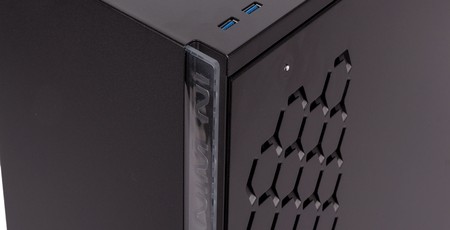
Interior
Our initial enthusiasm for the 101’s build quality took a hit when we played with the side panels. To be clear, the attachment mechanisms for both are very easy to use. The left glass one is secured with two push-to-lock pins at the top, while the right one utilises a pair of thumbscrews also at the top. However, the plastic of the left panel’s pins is easy to bend out of place if you misalign the panel even slightly (you may have experienced a similar thing with Intel stock coolers), and the front pin on our case quickly lost its grip strength. Meanwhile, one of the thumbscrews on the right panel actually sheared off completely, rendering it useless. We are admittedly a little at fault here, as the screws are not designed to be removed from the panel itself, which we did do, but it literally snapped on our first attempt at getting it back in. Thankfully, the remaining screw was enough to keep things locked in place, even with the system built, but we’d still be annoyed if this happened to us as quickly as it did had we purchased the case.
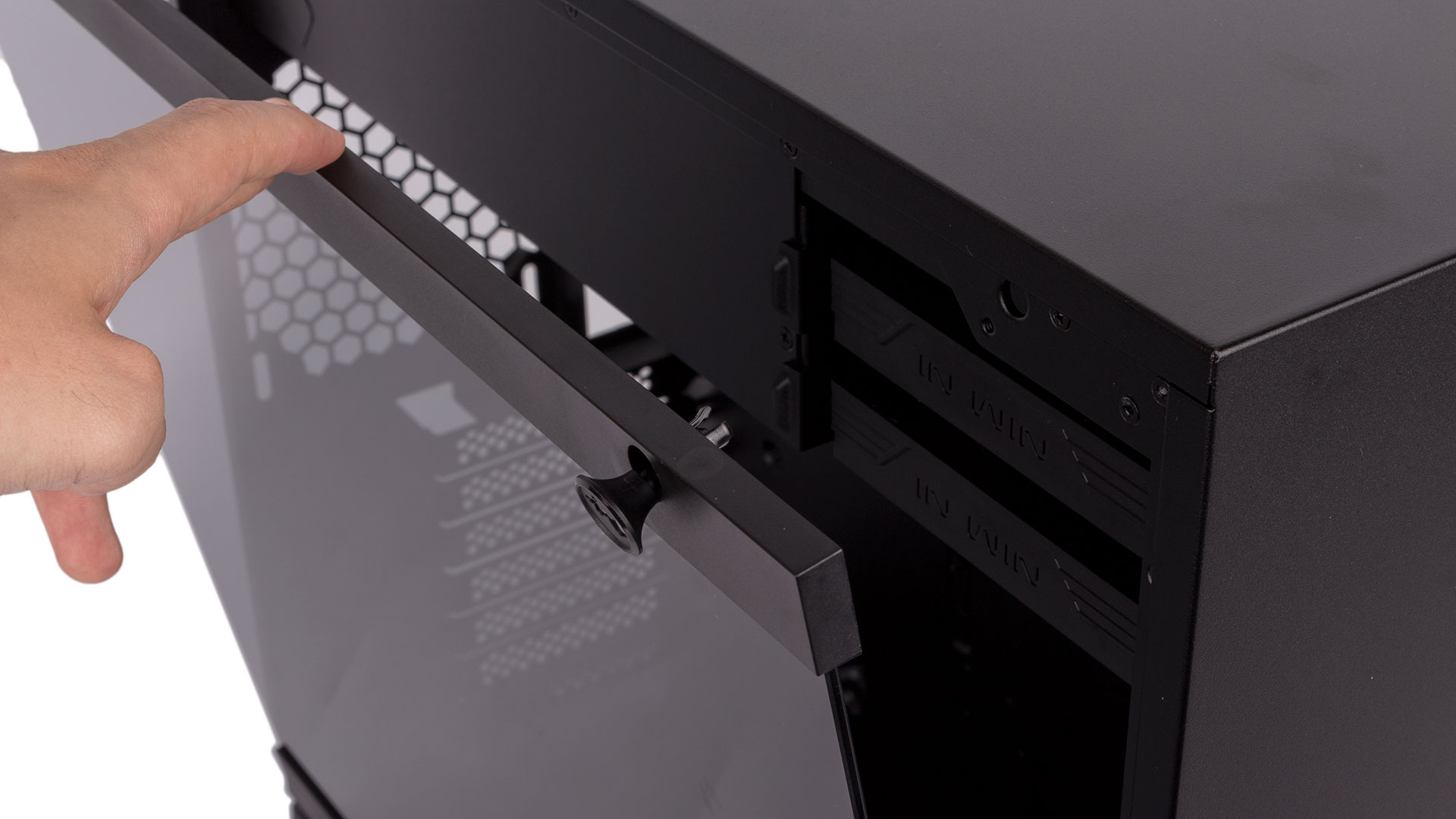
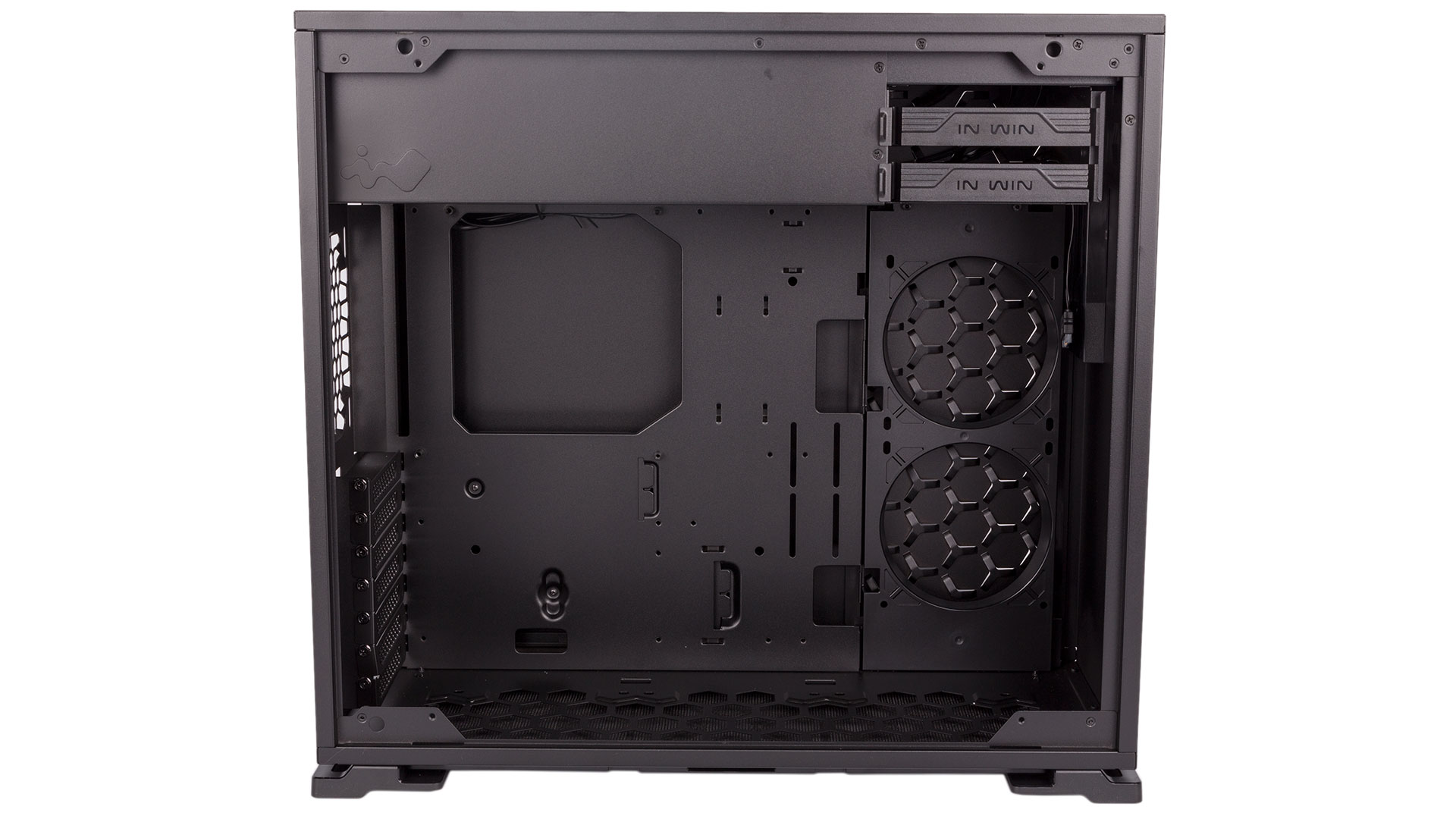
Inside, you’ll find a tower layout where the PSU has been moved from below the motherboard to above it and separated into its own chamber, albeit with a cutout that sees the power supply acting as the case’s exhaust. The primary chamber is kept very open and spacious thanks to the lack of drive mounts and fans. Standoffs for mini-ITX boards are pre-installed, but if you opt for a larger form factor you’ll need to add extra. A single metal VGA support bracket is also supplied in case you have a particularly heavy GPU. Clearances for PSUs and graphics cards are massive, although CPU coolers are limited to 160mm – that’s the only one you may have to watch out for.
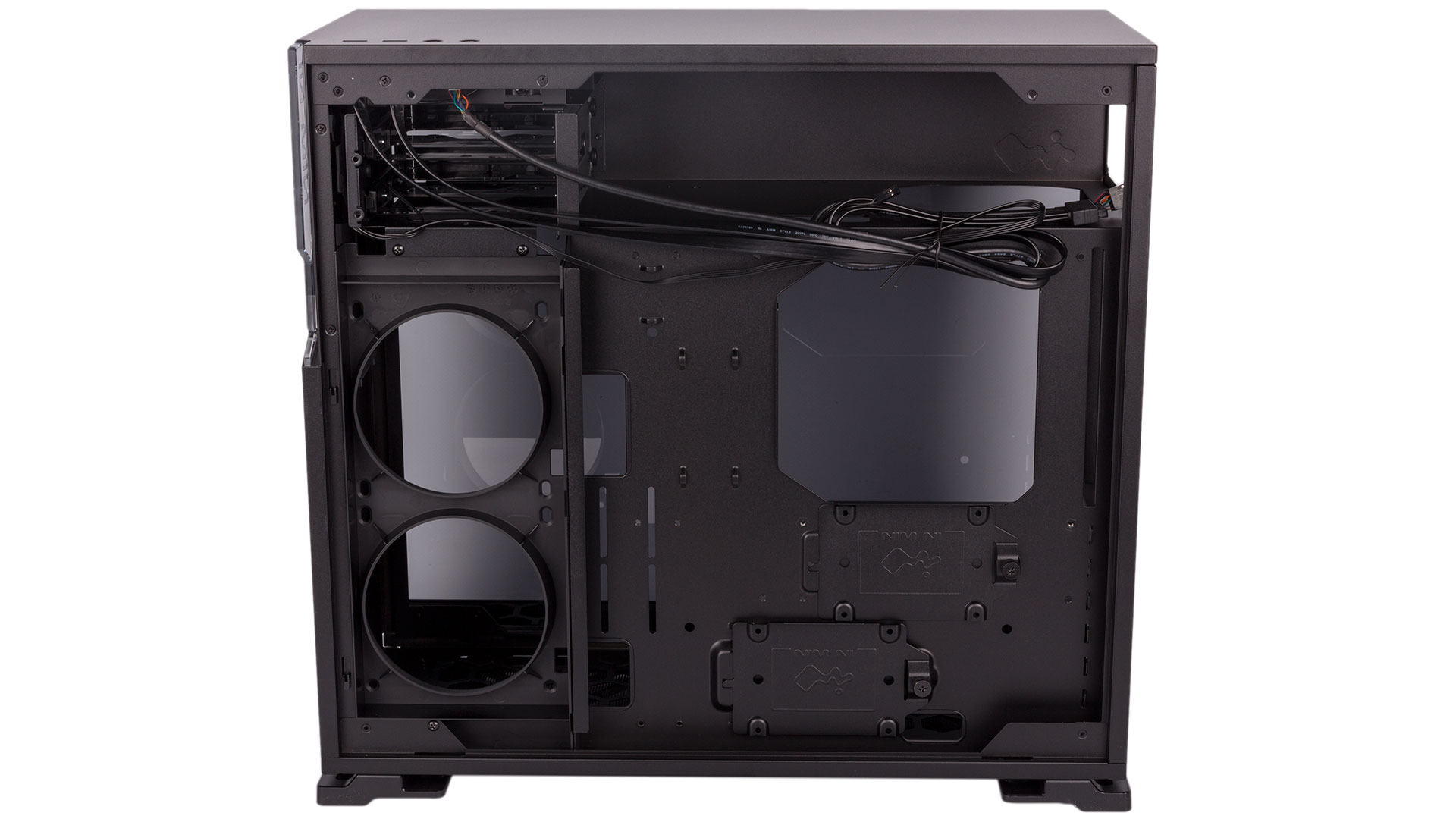
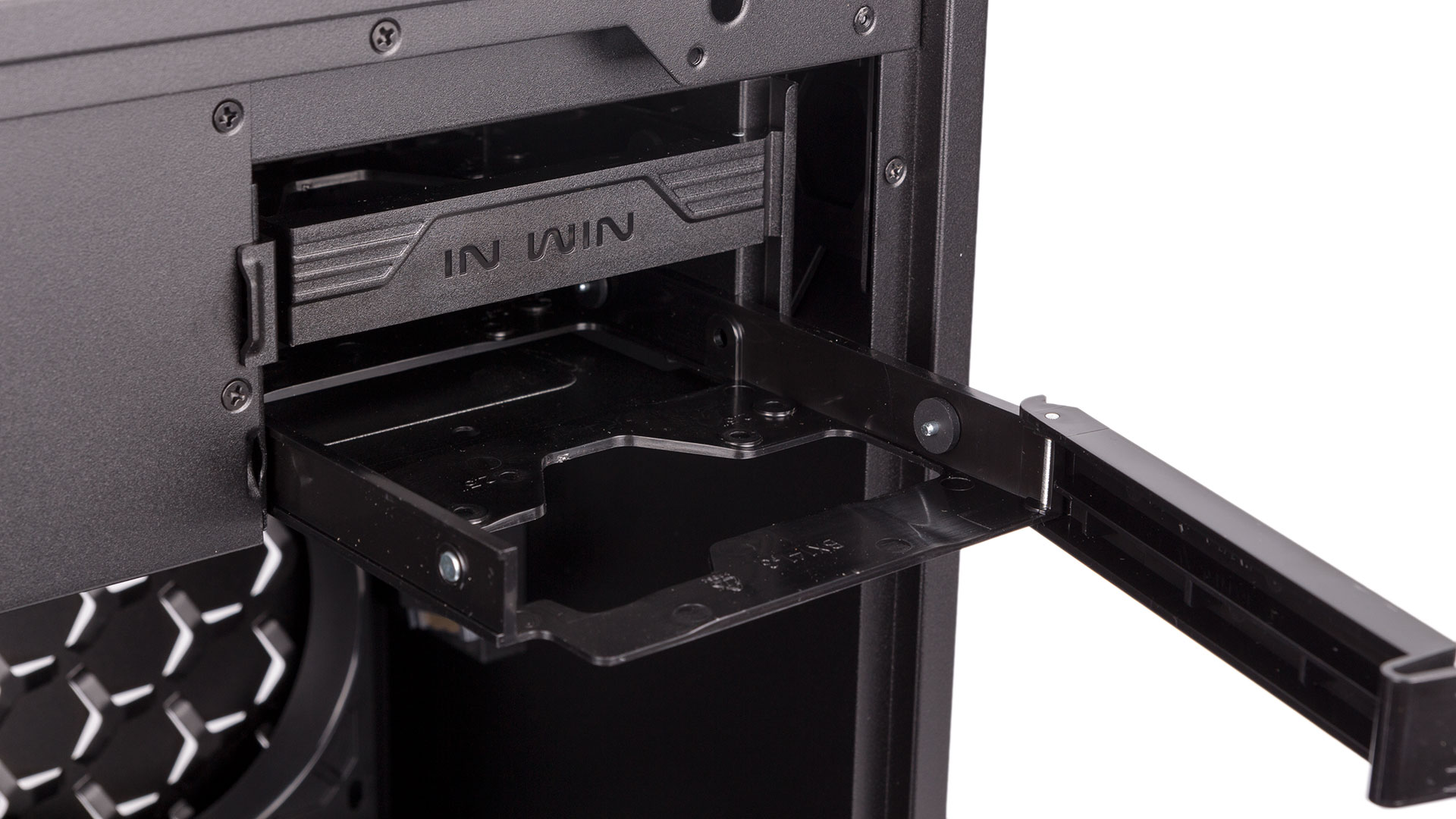
At the front of the upper chamber is a drive cage home to a pair of 3.5”/2.5” trays with nifty little locking arms and tool-free support with rubberised pins for larger drives. They’re very easy to use, as are the two metal trays fixed to the rear of the motherboard tray dedicated to 2.5” device mounting. Having support for only four drives seems small, but given the capacity you can obtain for both SSDs and HDDs now (not to mention M.2 drives you might use), it will be enough for most people, especially those shopping for a £65 chassis.
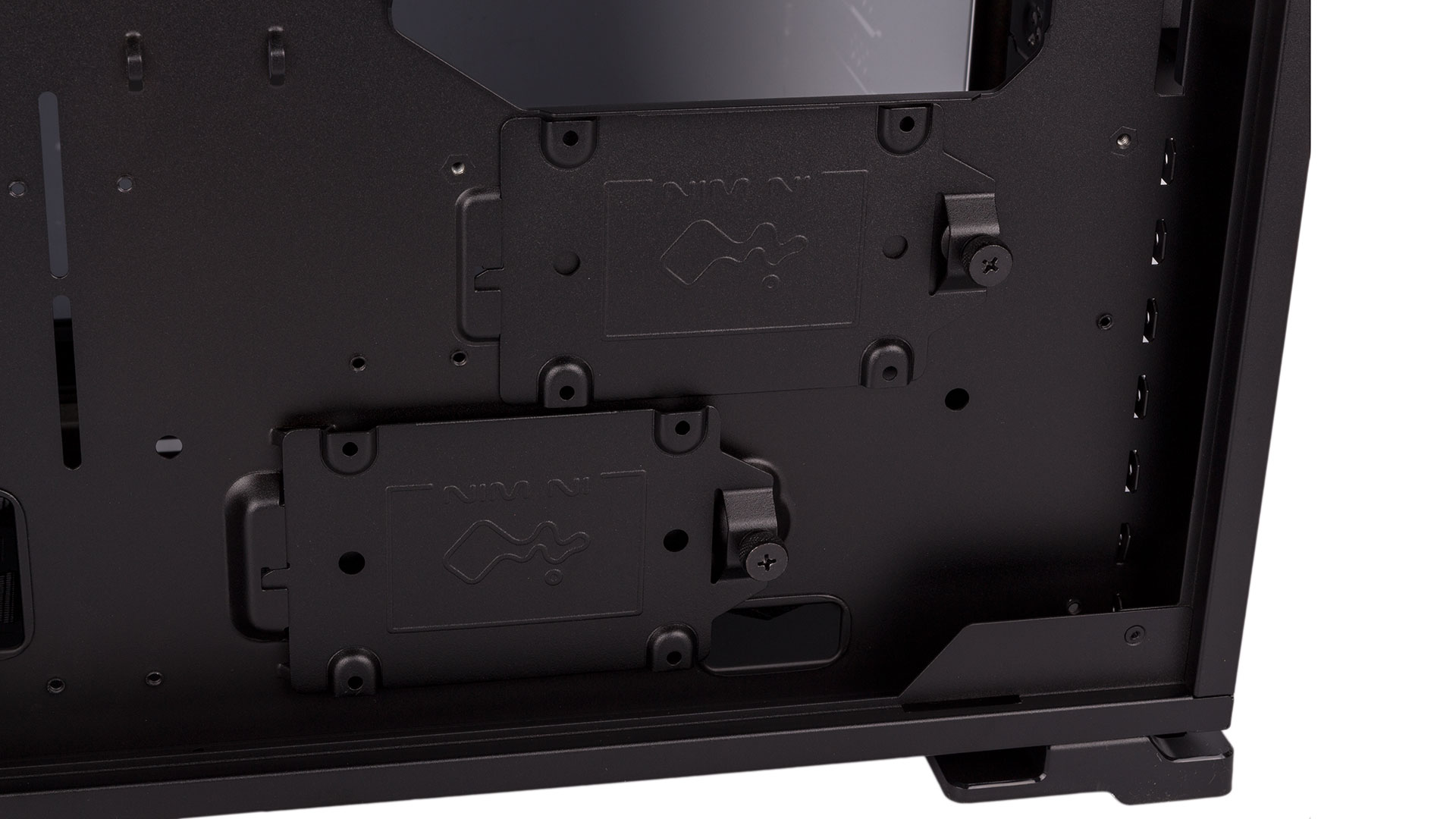
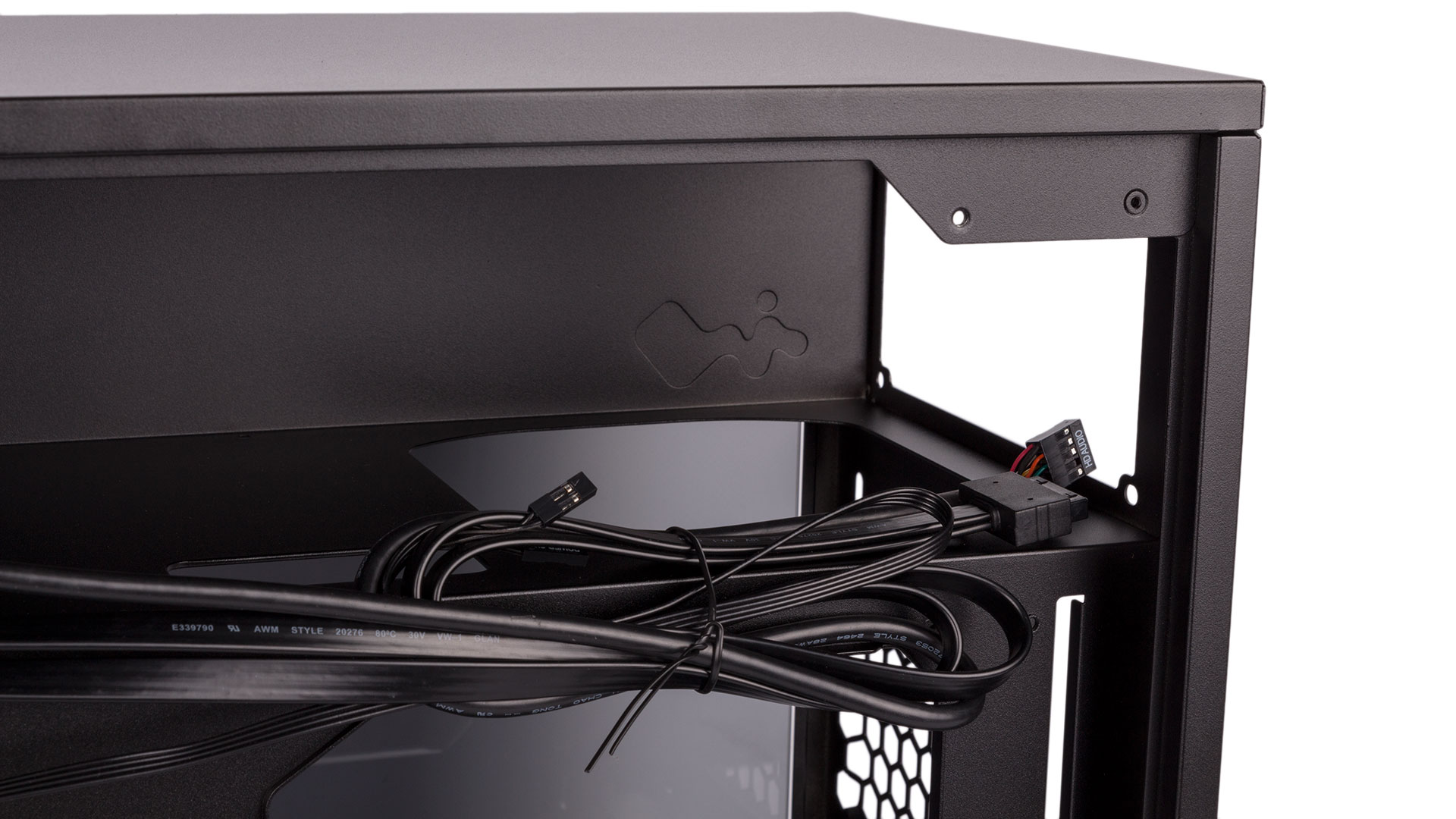
Looking at the case initially, we were dubious about its cable routing capabilities. There's a single routing hole that directly links the top and bottom chamber, and a few smaller ones to the side of the motherboard. These aren’t shielded with grommets, either, although that’s an understandable omission given the cost. That said, when it actually came to building, we had very few difficulties or issues. You don’t get fancy Velcro cable ties, but there’s a healthy amount of room behind the motherboard and up top as well as a good amount of zip ties and anchor points. The PCIe power and front panel audio cables were on show a bit more than we’d have liked, but we still ended up with a satisfying, clean build without much effort.
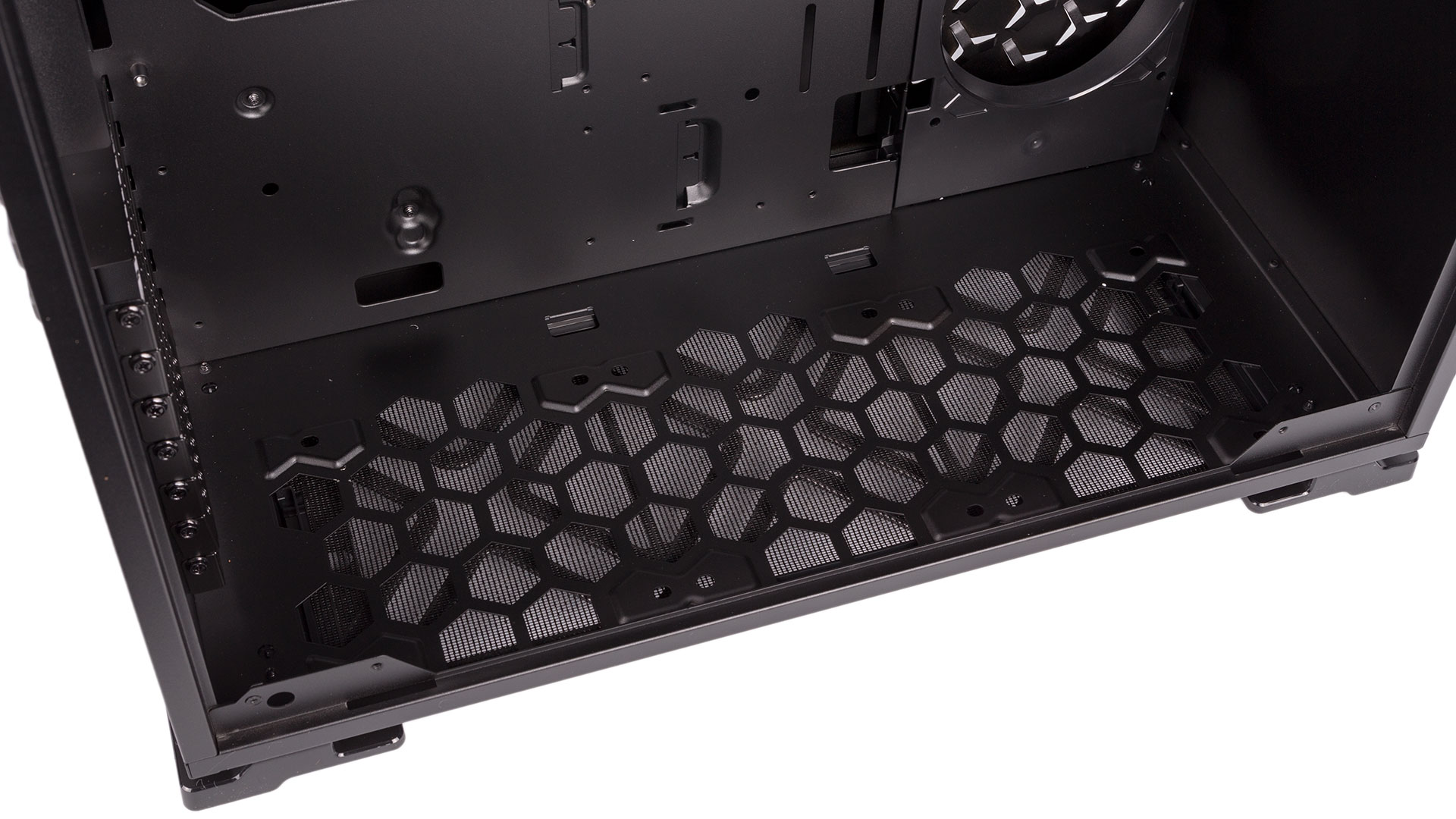
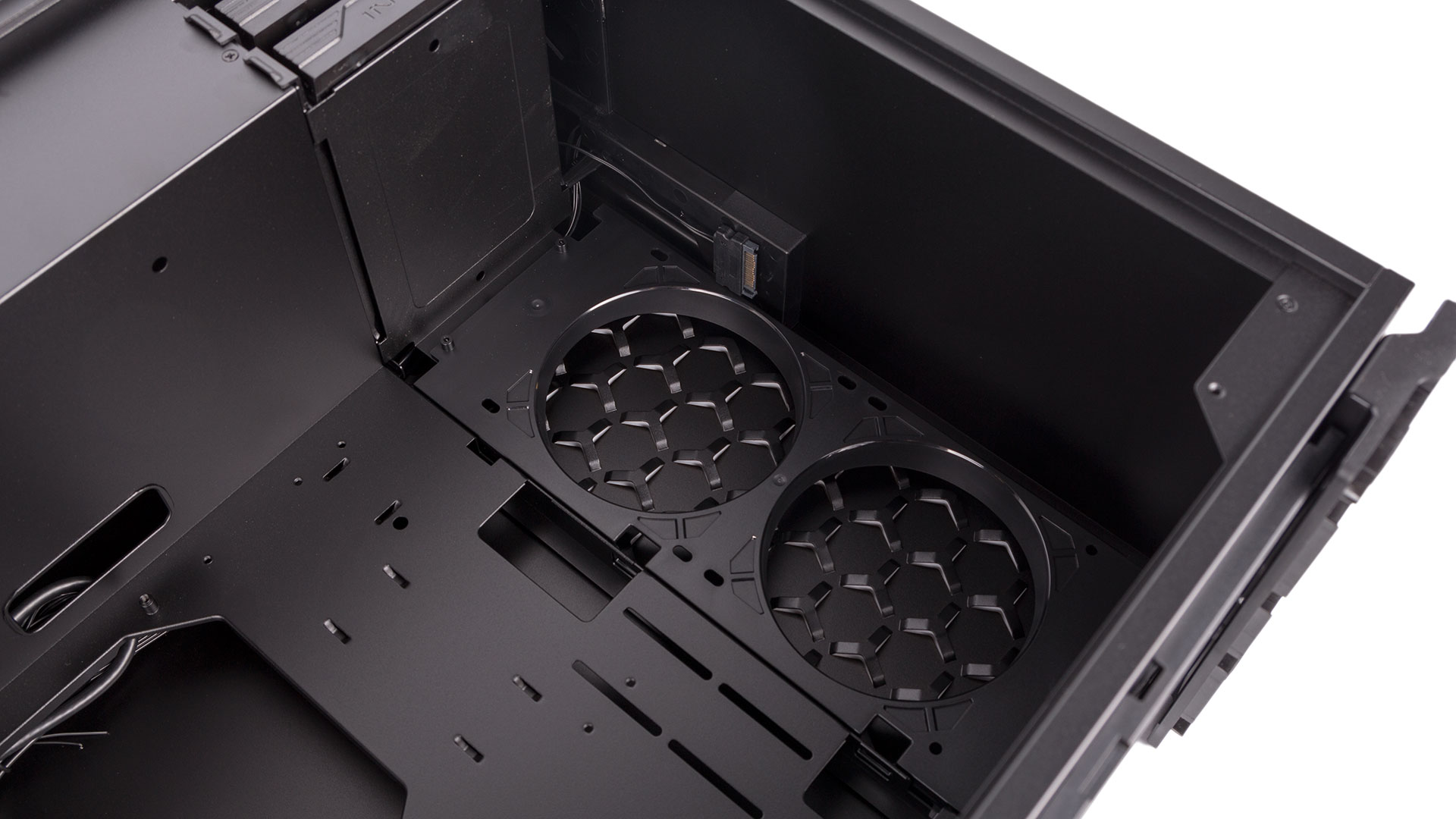
Water-cooling isn’t a focus for this case, but In Win still claims that 120mm, 240mm, and 360mm radiators are supported in the rear, side, and bottom mounts respectively. Using the larger ones will eat into the length of your graphics card or the number of PCIe expansion slots you can use, but it basically ensures that the majority of AIO coolers on the market are supported. It might be hard to fit a custom cooling loop inside, but we never say never here at bit-tech – we know some of you could manage it!

MSI MPG Velox 100R Chassis Review
October 14 2021 | 15:04








Want to comment? Please log in.